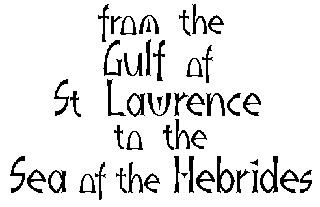
from the Gulf of St Lawrence to the Sea of the Hebrides
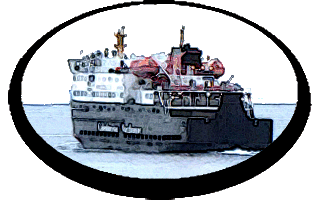

24 October 2012
The North Atlantic Arc Home
| .August. | September | .October. |
| S | M | T | W | T | F | S |
| 24 | 25 | |||||
| 26 | 27 | 28 | 29 | 30 | 31 | 1 |
| 2 | 3 | 4 | 5 | 6 | 7 | 8 |
| 9 | 10 | 11 | 12 | |||
| 4 | 5 | 6 | ||||
| 7 | 8 | 9 | 10 | 11 | 12 | 13 |
| 14 | 15 | 16 | 17 | 18 | 19 | 20 |
| 21 | 22 | 23 | 24 | 25 | 26 | 27 |
| 28 | 29 | 30 |
 |
|
Wednesday 24 October 2012--I start this morning with a stroll around Tongue. The village sits on a hillside overlooking the Kyle of Tongue, a long
narrow sea loch stretching inland from the north coast. It's a minor service center for a sparsely populated region, with a bank and two hotels. Caisteal
Bharraich, a castle of uncertain provenance, sits on a nearby hilltop. Some think it's a remnant of Norse rule here; others say it's more likely from
later in the medieval period. To the south, Ben Loyal stands watch over the valley below, impressive despite barely being a Corbett at 2,510 feet.
Tongue was accessible only by sea until 1828, when the road south to Lairg, now the A836, was built by Thomas (Him Again) Telford. I drive as far as Altnaharra and turn left up the B873, the start of the Strathnaver Trail. A couple of years ago, I visited the Strathnaver Museum in Bettyhill, a few miles east of Tongue along the coast. There I learned about the people of Strathnaver, cleared from their crofts at the behest of the Countess of Sutherland (who named Bettyhill, the grossly inadequate provision for resettlement of some of the displaced, for herself). 15,000 people were evicted between 1811 and 1821. The dirty work was begun by her estate factor, Patrick Sellar, who had himself taken out a lease to graze sheep. In 1814, he commenced a series of particularly ruthless evictions on the land he intended to occupy. Tenants were forcibly removed in May, without regard for the livestock and crops needed for survival. Their homes were set ablaze even as they scrambled to save their families and possessions. There was no mercy for the aged and infirm; told that one house contained a bedridden woman of nearly 100 years, he is reported to have said, "Damn her, the old witch, she has lived too long; let her burn." She was removed with her blankets afire, and she died a few days later, of shock or exposure. She was but one of Sellar's reported victims. The complaints against Sellar were so egregious that the county sherriff-substitute, Robert M'Kid, was compelled to arrest him and bring him to Inverness for trial on a wide variety of charges, including homicide. The trial was a farce--most of those scheduled to testify against Sellar, including M'Kid, were never permitted to do so. Sellar was acquitted, and retired to his lucrative holdings. M'Kid was dismissed as sherriff-substitute, roundly vilified, and ultimately hounded out of Sutherland. The brutal clearance of Strathnaver continued with utter impunity. The climax came a few years later and was described by Donald MacLeod, a son of Rosal township:
MacLeod wrote numerous long and bitter letters to the newspapers. He became such a nuisance that he, too, was chased out of the county. One day, when he was on business in Wick, his family was summarily evicted from their home in Bettyhill. The other residents were told not to aid them in any way, on pain of eviction. MacLeod removed to Edinburgh, and eventually to Canada, whence he continued his campaign against the Sutherlands. His letters were compiled, along with other material, and published as Gloomy Memories, a scathing response to Harriet Beecher Stowe's Sunny Memories of Foreign Lands. Mrs Stowe's two volumes of letters to friends were, for the most part, pleasant descriptions of her tour of Europe, following the publication of Uncle Tom's Cabin (which sold a million copies in Great Britain). Letter XVII in Volume 1, however, was a spirited defense of the Duchess of Sutherland and English and Scottish land reform policies, in reaction to MacLeod's screeds, which were published widely in North America:
The letter goes on at some length to describe the improvements to the Sutherland estate, the reasons for them, and the prosperity brought to the locals thereby, as described to her by the Sutherlands and their agents. With the benefit of 160 years of hindsight, we might see Mrs Stowe as credulous and naive. What is astonishing and inescapable is the irony of the famed abolitionist so unwittingly defending the callousness of the feudal lairds of Sutherland. [Mrs Stowe's Sunny Memories can be read at Project Gutenberg. Letter XVII starts here. MacLeod's rebuttal, Gloomy Memories, can be found as a pdf at Electric Scotland. The passage quoted above is on page 16 of the text, page 44 of the pdf.] I didn't have time to travel the Strathnaver Trail, a series of sites documenting the Clearances all along the valley, when I last visited Bettyhill. Today has been set aside for the express purpose. From the junction near Altnaharra, the road runs east along the north shore of Loch Naver before turning north toward Bettyhill. The cleared villages of Grummore and Grumbeg lie on the slope above the loch. It's a gray day, not very good for photography, but it seems appropriate for visiting such mournful sites. (How lucky I was to have two splendid days to go up Quinag and walk to Sandwood Bay.) There is a broch below Grummore, tumbledown and overgrown, once again testament to untold generations of habitation here. The remains of a chambered cairn at Grumbeg date even further back, to the neolithic period. No doubt it would have perplexed the earlier people to learn that their home would eventually become part of a feudal estate from which their descendants would be evicted. Farther down the valley, at Syre, the late 19th-century church was meant to serve the shepherds and gamekeepers of the Sutherland Estate. Its corrugated iron construction reminds me of similar structures in Iceland. There's a junction with the B871 nearby, leading to Helmsdale via the A897; but just across the bridge, a track leads south along the east bank of the River Naver. A short way down, I park the car and walk along to Rosal, another cleared village. The site is in the middle of forestry land, kept clear as a memorial. That means on the one hand that the surrounding territory looks nothing like it would have back in the day; and on the other, the limits of the perimeter fence are very clear, with trees just beyond. There is a loop of information panels through the ruins, documenting in first-person voice what life in such a village was like. It's 5:00 by the time I get back to the car. There is more to see in Strathnaver--I'll have to come back. Drive north toward Bettyhill, then west to Tongue. Dinner is in the Tongue Hotel. I ate at the Ben Loyal Hotel last night, and was disappointed that they'd stopped serving real ale for the season. The Tongue has Orkney Brewery's Northern Light. It's a bit off, validating, I guess, the Loyal's decision; but it'll do. Next |
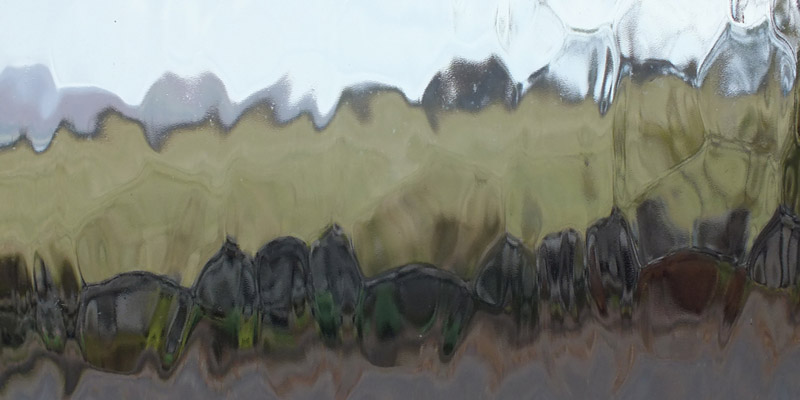 |
View From B&B
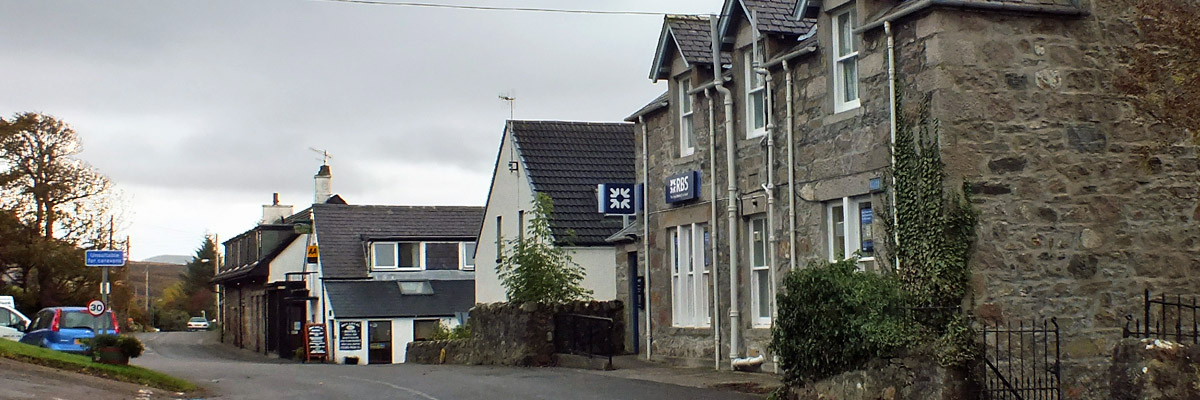 |
Tongue
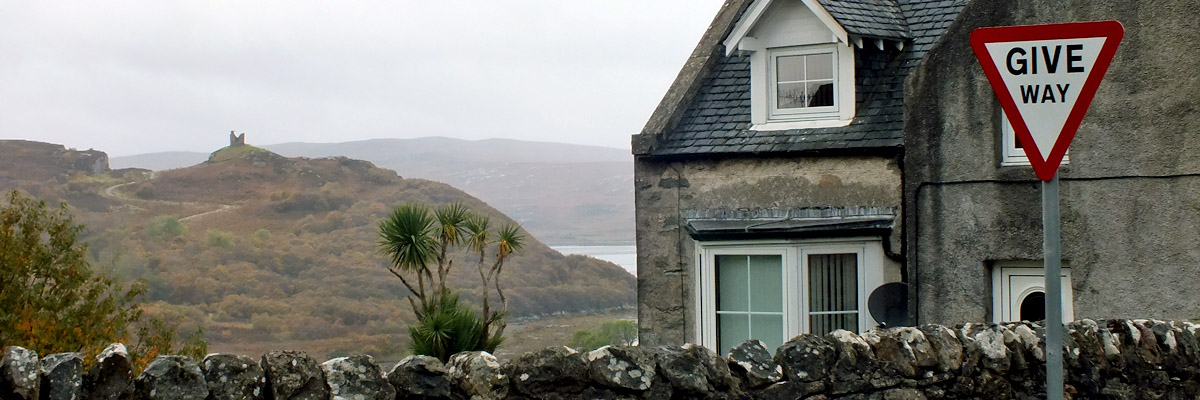 |
Tongue
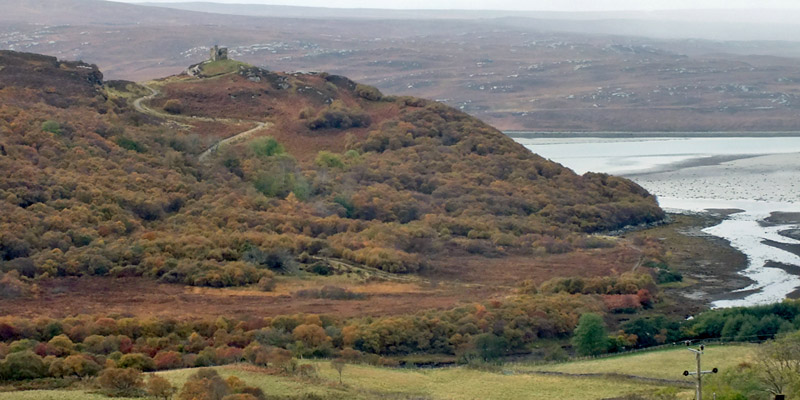 |
Caisteal Bharraich
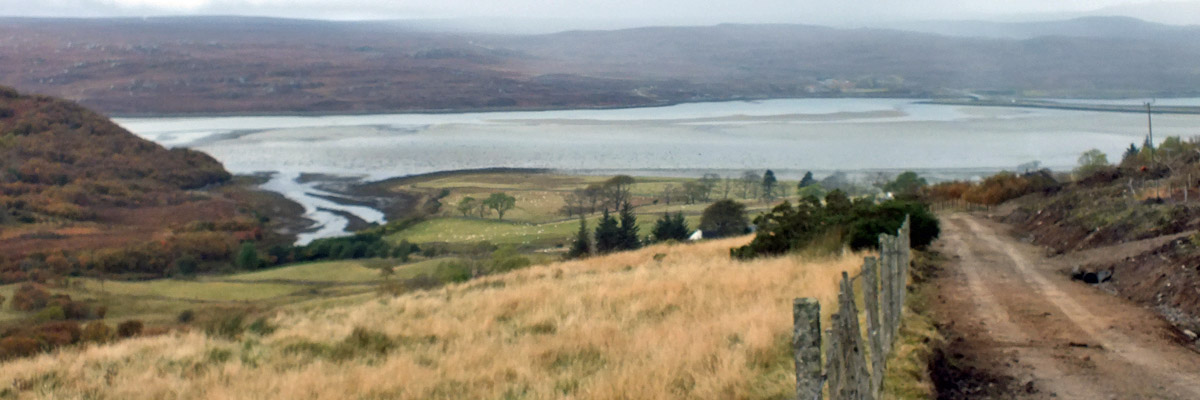 |
Kyle Of Tongue
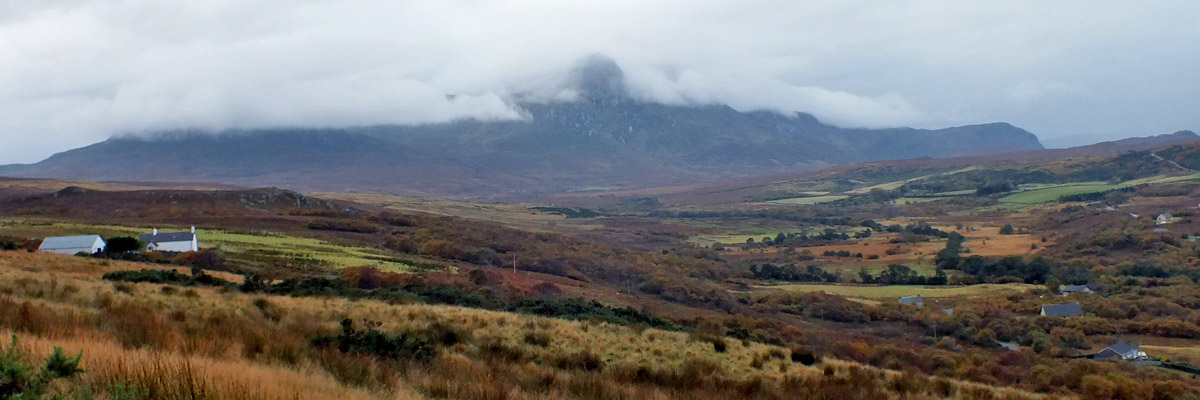 |
Ben Loyal
 |
Grummore Broch
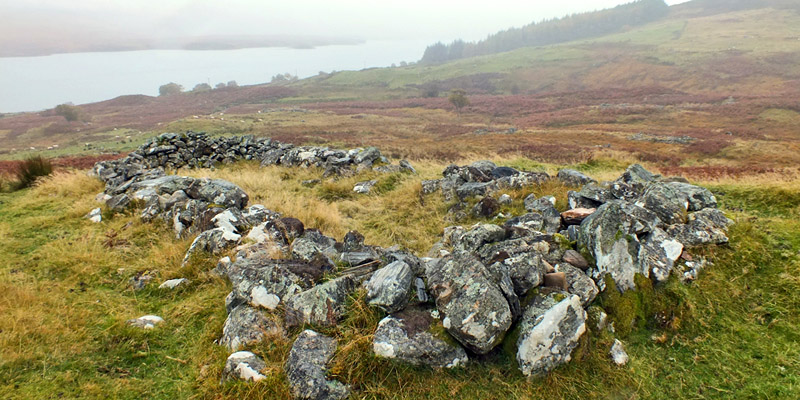 |
Grummore
 |
Grumbeg
 |
Grumbeg
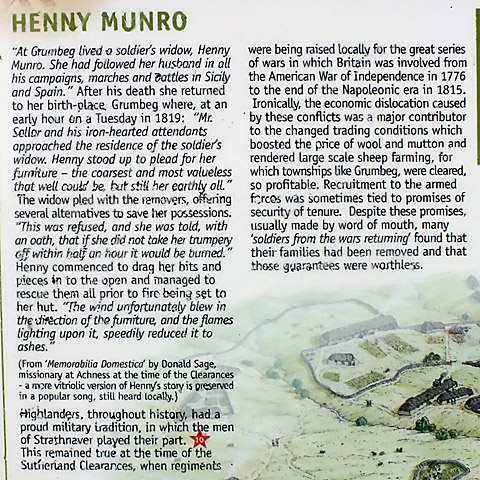 |
Grumbeg
 |
Syre
 |
Syre
 |
Gloomy Memories
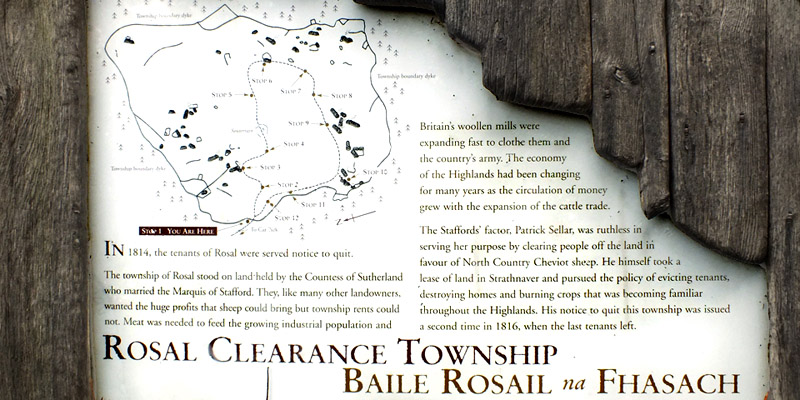 |
Rosal
 |
Rosal
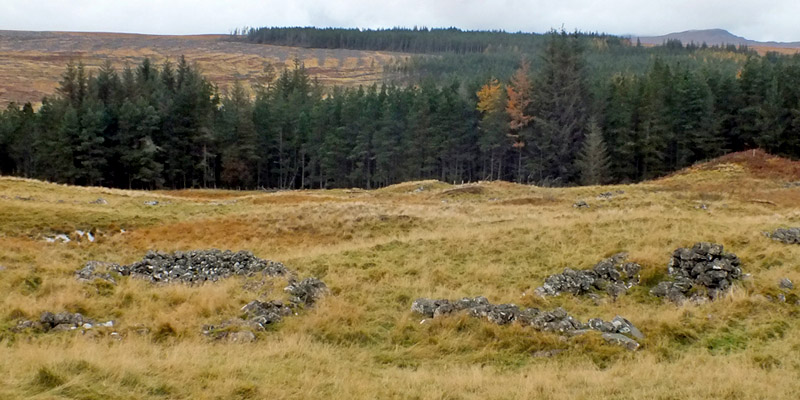 |
Rosal
 |
Rosal
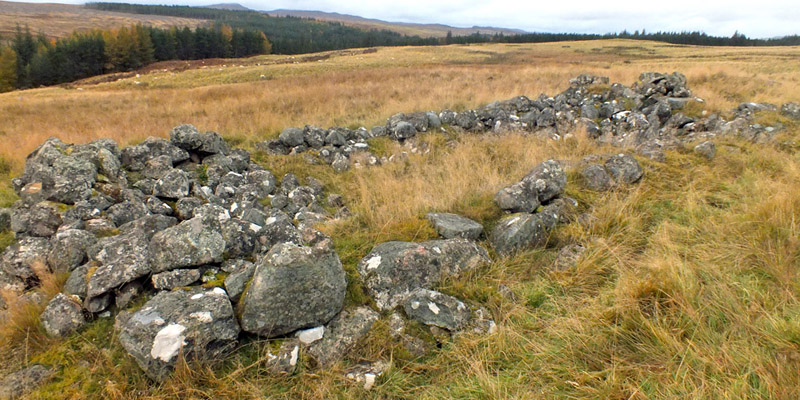 |
Rosal
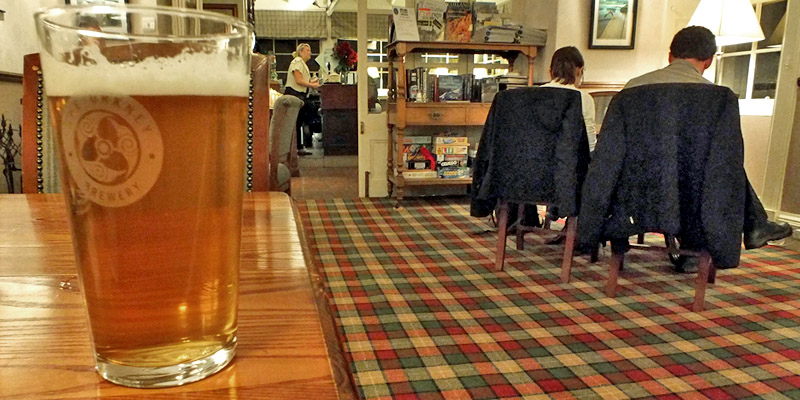 |
Tongue Hotel
Same carpet as the Kylesku Hotel
Today's Route
Next
| .August. | September | .October. |
| S | M | T | W | T | F | S |
| 24 | 25 | |||||
| 26 | 27 | 28 | 29 | 30 | 31 | 1 |
| 2 | 3 | 4 | 5 | 6 | 7 | 8 |
| 9 | 10 | 11 | 12 | |||
| 4 | 5 | 6 | ||||
| 7 | 8 | 9 | 10 | 11 | 12 | 13 |
| 14 | 15 | 16 | 17 | 18 | 19 | 20 |
| 21 | 22 | 23 | 24 | 25 | 26 | 27 |
| 28 | 29 | 30 |
The North Atlantic Arc Home
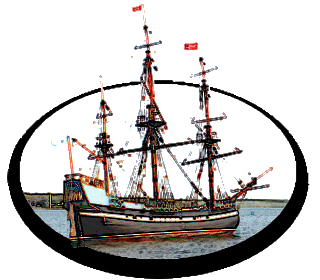
Mr Tattie Heid's Mileage
Results may vary
MrTattieHeid1954@gmail.com